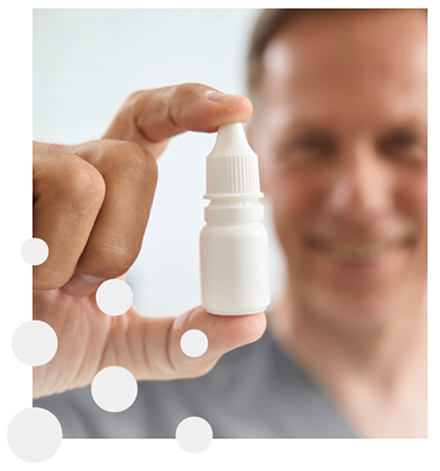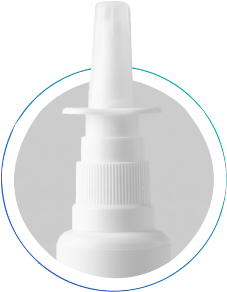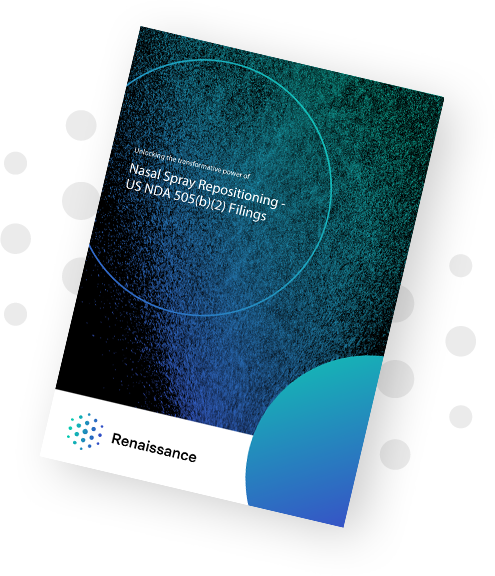Bringing a new drug to market is a complex and costly endeavor, with the mean cost of developing a new drug for the U.S. market estimated to be $879.3 million . For pharmaceutical companies seeking to maximize their R&D investment, drug repositioning (also known as drug repurposing) offers a compelling opportunity.
Drug repositioning involves finding new therapeutic uses for existing drugs with a known safety profile. By exploring new indications, changing administration routes, creating combination therapies or reformulating drug properties, developers are unlocking the hidden therapeutic potential of existing drugs. Consequently, repositioning delivers numerous advantages for both drug developers and patients, including:

Time and cost efficiency
Drug repositioning significantly reduces development time and costs by utilizing existing preclinical and clinical data, allowing companies to bring therapies to market faster and at a lower cost.
New treatments for rare diseases
Repositioning offers hope for patients with diseases that have limited treatment options. By exploring existing drugs for new indications, researchers can potentially identify therapies for these underserved populations.
Established safety profile
One of the biggest hurdles in drug development is establishing safety. With repositioned drugs, much of the safety profile is already known, reducing the risk of unexpected adverse events for patients.
Higher success rate
Since the approved drug has already passed rigorous safety testing, repositioned therapies generally have a higher probability of success in clinical trials compared with new chemical entities (NCEs). With this in mind, it is no surprise that approximately one third of the new approvals by the U.S. Food and Drug Administration (FDA) in the last decade referred to repositioned drugs [2].

For modified or improved drugs, including repositioned therapies, the 505(b)(2) pathway offers a more streamlined approach. It allows drug developers to leverage existing data, such as previous FDA submissions or published literature, reducing the need for extensive new studies. By relying on established safety profiles and leveraging existing knowledge, developers can mitigate risk and accelerate development timelines to bring repositioned therapies to patients sooner.
The global drug repositioning market is experiencing substantial growth, fuelled by drug developers seeking the benefits of repurposing therapeutics. Valued at USD 32.1 billion in 2023, it is expected to grow significantly over the next decade, projected to reach USD 51.8 billion by 2033 [3]. A key factor further driving this expansion is the design of the U.S. regulatory pathway.
The 505(b)(1) pathway is the established approval route for pharmaceutical companies developing novel therapies destined for the U.S. market. While essential for groundbreaking innovations, the 505(b)(1) pathway can be time-consuming and resource-intensive, requiring a comprehensive data package encompassing extensive preclinical and clinical studies to demonstrate the safety and efficacy of a completely new drug.
Which therapies can leverage the 505(b)(2) pathway?
Developers can leverage the 505(b)(2) pathway for therapies that have been repositioned by:
- Modifying or improving the formulation
- Changing the dosage form
- Altering the route of administration
- Substituting an active pharmaceutical ingredient (API) in a combination where the other API is approved
It can also be used for NCEs where data is derived from published studies, allowing for reliance on existing data and enabling a faster and more cost-effective approval process.
Strategic advantages of the 505(b)(2) pathway
| Feature | 505(b)(1) Pathway | 505(b)(2) Pathway |
|---|---|---|
| Data requirements | Full data package generated by the sponsor | Reliance on existing data from various sources |
| Time to market | Longer development timelines | Faster approval times, leading to quicker market entry |
| Approval route | Time-consuming and resource-intensive process | A more efficient route to approval with reduced data requirements and streamlined processes |
| Cost-effectiveness | Significantly higher development costs | Reduced development costs due to reliance on existing data |
Breathing new life into old therapies with nasal spray repositioning
One particularly promising avenue for drug repositioning is the development of nasal sprays. By reformulating existing drugs for intranasal delivery, developers can unlock a range of benefits:

1. Improved patient compliance and convenience
Nasal sprays offer a distinct advantage over other routes of administration, such as injections, due to their ease of use and convenient self-administration. With enhanced convenience, nasal sprays can promote better patient adherence to treatment regimens, ultimately improving overall effectiveness and patient satisfaction.
2. Enhanced efficacy and safety
Drugs delivered orally typically pass through the digestive system and are absorbed into the bloodstream before being transported to the liver and extensively metabolized, limiting bioavailability. Intranasal delivery bypasses first-pass metabolism and enables direct transport to the target site, potentially leading to enhanced therapeutic effects and lower dosing requirements.
3. Expanded market opportunities
Repositioning a drug as a nasal spray can open up new markets and patient populations, particularly for those who may have difficulty with other routes of administration. In particular, individuals who struggle with swallowing pills, such as pediatric or geriatric patients, or those with conditions affecting the gastrointestinal tract, could benefit from intranasal therapeutic options.
4. Rapid onset of action
The nasal mucosa provides a highly vascularized surface area, allowing for rapid absorption and quick onset of therapeutic effects. Additionally, the unique anatomical connection between the nasal cavity and the brain provides a pathway for direct drug delivery to the central nervous system. As a result, nasal delivery can be particularly valuable for neurological conditions requiring immediate relief, such as seizures, Parkinson’s rigidity, migraine, panic attacks, Alzheimer’s disease or multiple sclerosis attacks and cardiovascular events [4-6].
The growing demand for patient-centric drug delivery options and the unique advantages of intranasal administration have positioned nasal sprays as a key area of focus in pharmaceutical development. By leveraging the 505(b)(2) pathway, companies are efficiently repositioning existing drugs as nasal sprays, capitalizing on this market opportunity and bringing innovative therapies to patients.
In particular, a growing number of emergency-use medications designed for immediate effect are being repositioned as nasal sprays, including Neffy, the first nasal spray approved by the FDA for severe allergic reactions [7]. This innovative product offers a compelling alternative to traditional injectable epinephrine auto-injectors, providing a non-invasive and user-friendly method for quick drug delivery.
Another driving force behind the rise of nasal spray repositioning is the advancement of formulation technologies, such as penetration enhancers. By increasing drug absorption across the nasal mucosa, penetration enhancers can improve drug bioavailability and therapeutic potential [8]. As a result, penetration enhancers are enabling the delivery of APIs that might have previously been considered unsuitable for nasal administration due to poor absorption or rapid clearance. This is particularly pertinent when considering an estimated 90% of APIs currently under development are poorly soluble [9].
Ready to unlock new potential through nasal spray repositioning?
With unrivaled expertise in nasal product development and a deep understanding of the 505(b)(2) regulatory pathway, we help breathe new life into established therapies through innovative nasal delivery.
Explore how repositioning existing drugs as nasal sprays can enhance patient outcomes and accelerate time-to-market in our expert-led eBook.
Download the eBook


 Top of page
Top of page